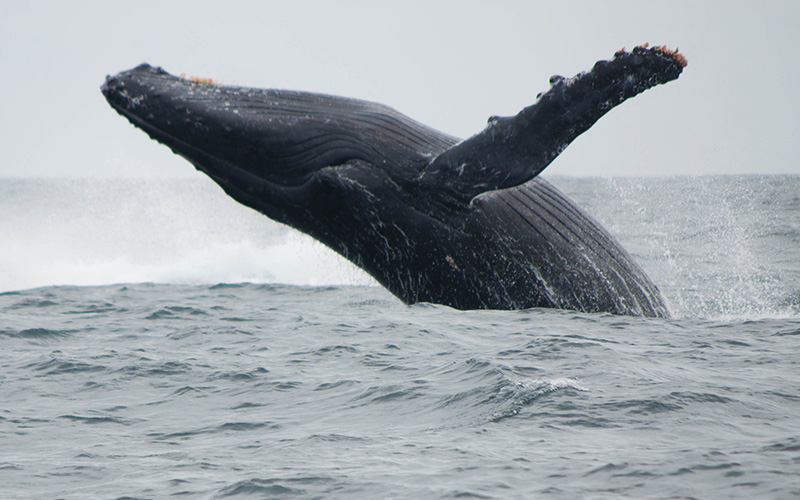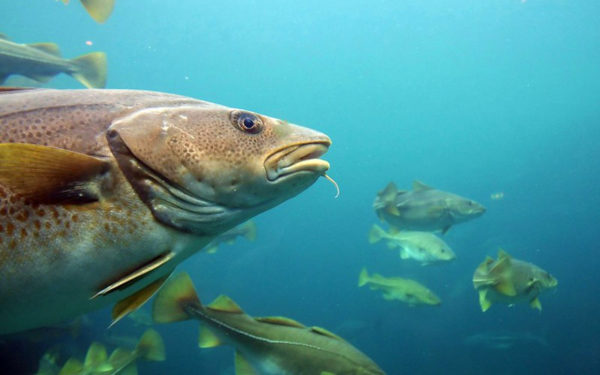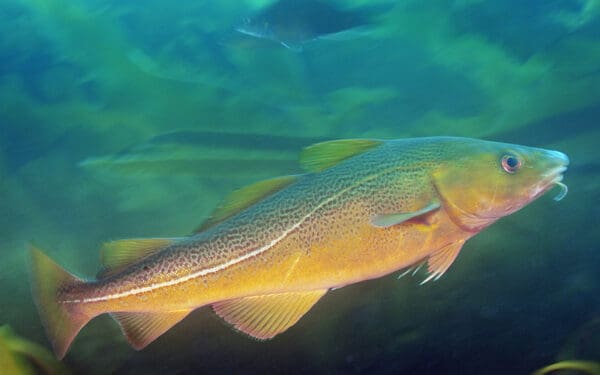
Menhaden support the marine ecosystem as food for striped bass, tuna, whales, and more.
Commonly hailed as “the most important fish in the sea,” Atlantic menhaden could soon be managed a bit differently, as the body that regulates the species hosts an important discussion next month. The Atlantic States Marine Fisheries Commission (ASMFC) will meet November 13-14 with a historic opportunity to solidify the importance of menhaden’s role in maintaining the health of our entire ocean ecosystem.
The Most Important Fish in the Sea
Menhaden, also called pogies or bunker, are a small forage fish. This means the species supports a larger marine ecosystem as food for striped bass, tuna, and whales, among other large marine predators. Menhaden even support species above the surface, such as ospreys, eagles, and other seabirds.
Unfortunately, in recent years, menhaden populations have reached historic lows. And while numbers now appear to be on the rise, many menhaden predators are still struggling. This could signal that menhaden levels are not yet high enough to be a consistent food source for these predators.
Ensuring an ample supply of such an important forage fish species is crucial for these larger species to thrive. And by extension, it’s crucial for the health of the businesses that rely on those larger species as well (whale watch companies, for example).
At its November meeting, the ASMFC will vote on a provision to change how menhaden are managed. One component of the provision is to establish “ecological reference points” in order to move towards an ecosystem-based management approach for menhaden. (Ecosystem-based management means that all ecosystem factors – climate change, interactions with other species, etc. – are considered when establishing management rules for that species.)
When the ASMFC held a series of public hearings seeking initial input for this provision last year, more than 25,000 people who submitted comments favored the move.
Ecosystem-Based Management is the Path Forward
The ASMFC’s current “single-species” approach to managing menhaden and setting catch limits is outdated, and it is time to move towards a management approach that considers menhaden’s important broader role in the ecosystem.
Even though it will take several more years for technical advisors to develop ecological reference points for menhaden, there is action the ASMFC can take now to improve management: select Option E in Amendment 3, Issue 2.6.
Option E allows ASMFC technical advisors to continue to develop menhaden-specific ecological reference points – but in the interim, sets the goal of leaving 75 percent of the menhaden population in the ocean before fishing, as well as a population threshold of 40 percent (meaning the population should not fall below that number).
Take Action
It’s not only common sense to leave more menhaden in the ocean, but also what the best peer-reviewed science tells us is necessary. Managing menhaden for their role in the ecosystem will have effects beyond ecosystem health. It will improve fishing opportunities and benefit all stakeholders over time, from recreational and commercial fishermen to wildlife and tourism businesses.
Through October 24, the ASMFC is collecting public comments on this measure – and you can take action now to support better management for menhaden. Don’t miss the opportunity to help safeguard the future of the most important fish in the sea!



